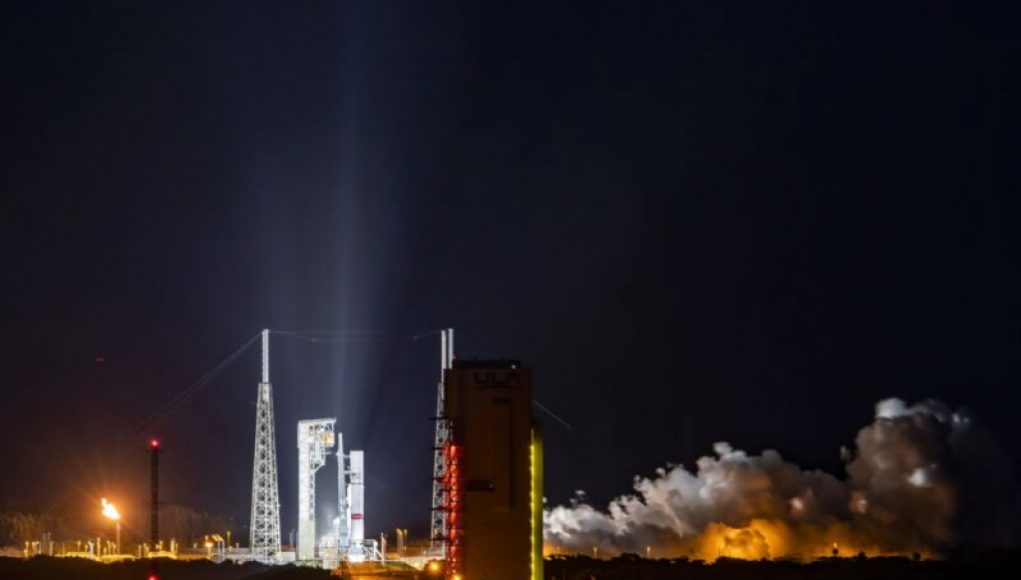Exciting news from United Launch Alliance! The company has identified the root cause of the failure that destroyed the upper stage of its Vulcan rocket in late March. According to Tory Bruno, the company’s chief executive, the Centaur V upper stage failed due to higher-than-anticipated stress near the top of the liquid hydrogen propellant tank and slightly weaker welding.
Bruno recently shared this information during a teleconference with space reporters, where he also discussed the steps the company is taking to fix the issue. United Launch Alliance is determined to fly the heavy lift Vulcan rocket on its debut mission during the fourth quarter of this year.
Tank failure
Let’s dive deeper into what happened. The Centaur V upper stage was destroyed during pressure testing at Marshall Space Flight Center in Alabama on March 29. Bruno explained that this was the 15th test in a series of 45 tests to qualify the Centaur stage for all potential mission profiles. However, during the test, the hydrogen tank started leaking, and the leak expanded over four and a half minutes.
As hydrogen leaked into a confined area of the test stand, it eventually caught fire after reaching a flammable concentration and finding an ignition source. This resulted in significant damage to the test stand, as well as the hydrogen and liquid oxygen tanks.
The failure investigation team quickly identified that the leak occurred in the forward dome of the hydrogen tank. Through careful analysis, they determined that the crack in the stainless-steel tank originated near the top of the dome.
Advertisement
To understand the nature of the failure, the company ran a high-fidelity model of the loads and stresses on the hydrogen dome in that location. Surprisingly, they discovered higher loads than expected. Additionally, the team found that the strength of the nearby welds was not as high as previously assessed.
“The combination of higher loads and somewhat lower strength in the weld caused the crack to begin,” Bruno explained. “It’s important to note that we had already conducted 15 tests, which exposed the structure to many pressure cycles and a significant amount of time under pressure.”
Corrective actions
Now, let’s talk about the fix. Bruno assured that the solution is relatively straightforward. The area near the failure will be strengthened with an additional ring of stainless steel and strips of metal. These corrective actions will slightly increase the mass of the upper stage, but it won’t significantly affect the payload capacity of the vehicle.
The company is already preparing a new dome with these fixes, and it will undergo additional pressure tests to ensure its predicted behavior. Furthermore, the Centaur V upper stage intended for the debut flight of the Vulcan rocket will also undergo similar modifications.
Bruno expressed his satisfaction with the performance of the rocket’s first stage during a recent “flight readiness firing” test. He mentioned that everything went smoothly, and no further actions were required.
Schedule
Looking ahead, Bruno estimated a period of four to six weeks between the completion of the qualification tests and the launch of Vulcan. This highly anticipated mission will carry a lunar lander for Astrobotic and two test satellites for Amazon’s Project Kuiper megaconstellation. The launch date will also depend on the lighting conditions on the Moon for the lander, as there are only a few acceptable launch dates per month.
The second flight of Vulcan will involve launching the Dream Chaser spacecraft for Sierra Space. Although one of the BE-4 engines intended for this mission exploded during acceptance testing, Bruno assured that such failures are not uncommon in the early stages of development. Blue Origin is already working on additional engines to address the issue.
If all goes according to plan, the Vulcan rocket will be certified for national security launches by the second quarter of 2024. United Launch Alliance is determined to make this timeline a reality and is excited about the future prospects of its Vulcan rocket.
Stress levels have been on the rise recently among engineers with the advanced aerospace company Vulcan Aerospace. This is due to what could possibly be a catastrophic failure of the company’s most advanced upper stage rocket component.
The rocket, which is designed to bring the upper stage of a launch vehicle into space, experienced a massive failure during a recent test, due to unexpected and unexplained steel welds that weakened over time. The issue was identified by engineers during their extensive tests of the component, which started at around 40,000 pounds of pressure and gradually increased to an unexpected 65,000 pounds.
As part of their job, engineers at Vulcan Aerospace were tasked with developing a superior upper stage rocket, one that would allow the launch vehicle to reach higher altitudes with more precision. They used state of the art technology and advanced materials in order to achieve this goal and invested a great amount of time and resources into the design process.
Vulcan is now faced with the difficult task of attempting to repair the component or to return to the original design. Unfortunately, due to the time and resources that have been put into the project, it is beneficial for the company to resolve the issue in the most efficient and cost-effective manner possible.
Engineers at the company have been working tirelessly to find a solution and they have faced a number of delays due to the complex nature of the failure and the numerous tests needed for resolution. They have also faced several challenges in attempting to diagnose the issue due to the complexity of the upper stage design, which has had unforeseen and potentially catastrophic effects.
Overall, Vulcan’s upper stage has failed due to unprecedented levels of stress and pressure, which weakened the welds and caused a major cascade of failures. The stress levels among engineers at the company have been steadily increasing as they attempt to find a solution to the costly issue.




















